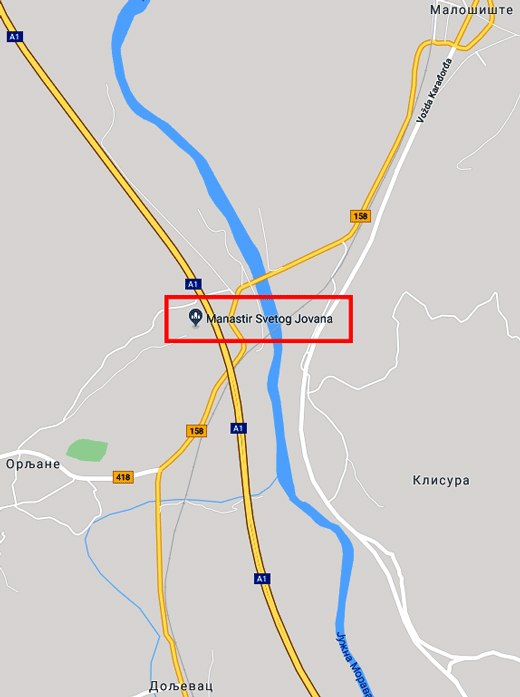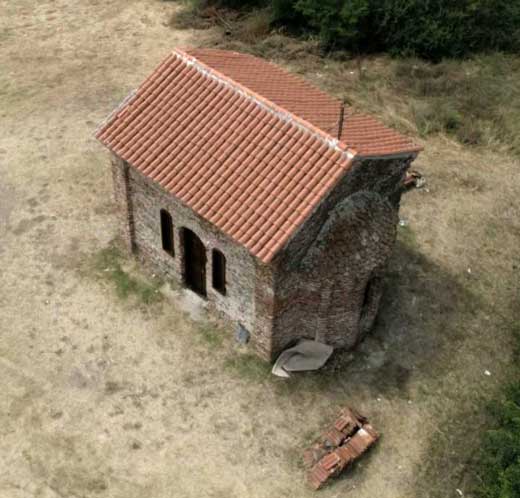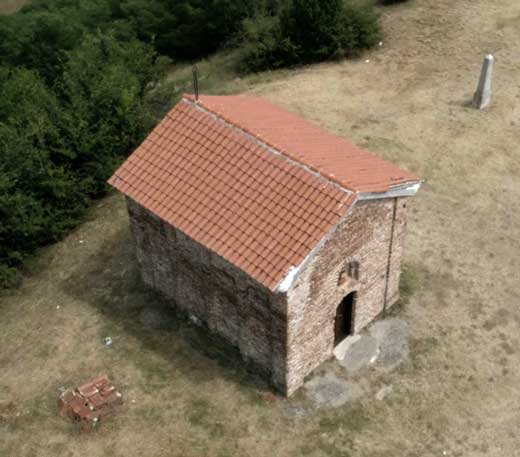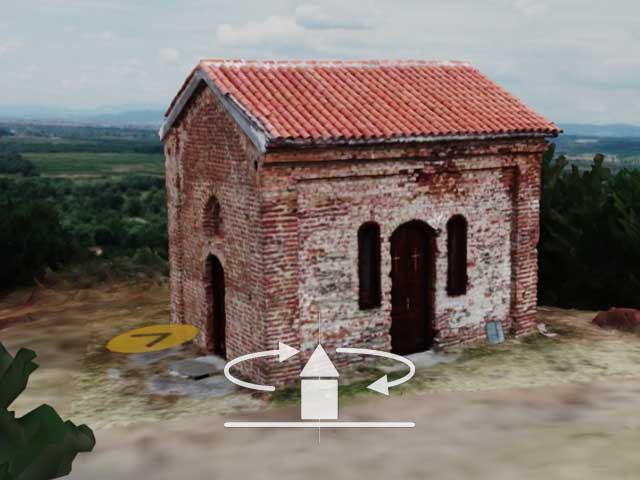ST. JOHN CHURCH
Protected cultural monument, listed as SK 206 with the Republic Institute for the protection of monuments of cultural heritage.
ST. JOHN CHURCHOrljane, Doljevac
Location
The church dedicated to St. John in the village of Orljane was built on a flat plateau on the Komnjiga hill, across the medieval town Koprijan (Whore’s Town). The flat Dobricko field extends below the church, and at the very foot of the hill, Toplica river flows into the South Morava.

History
There is little data on the foundation of the church. The documents of the Nis Institute for the protection of monuments of cultural heritage state that the church was built in pre-Nemanjic era. It is believed that the ancient, Byzantine church was built in 11th century, and painted in late 14th and early 15th century, during the building of Koprijan. The first data on the church is from an old royal charter from the 14th century. In the chrysobull of prince Lazar to the Ravanica Monastery, written in 1381, the village Orljane is mentioned, as well as the church of St. Nicolas on the Komnjiga hill. It is actually this church, only it is likely that during the Turkish rule, the church was destroyed and the village went barren, and the newly-settled inhabitants renewed the church and dedicated it to a new saint protector, St. John the Baptist.
The church was mostly damaged during the Serbian-Turkish war in 1877, when it was destroyed with cannons. A certain Zivadin from Nis rebuilt it in 1883. Only the northern wall and a piece of altar apsis were preserved, the rest was built from anew. During the reconstruction in 1996, the church was plastered on the outside and roofed. The final conservatory works performed by the Nis Institute for the protection of monuments of cultural heritage in 2000 returned the church’s original look.

Church description
St. John Church is a small, single-nave edifice, with a rectangular base shaped as a concise inscribed cross, with semi-circular altar apse in the east. The churches with such bases were frequently built during the 11th century in the Byzantine empire. The outside walls are built with bricks, in the Byzantine style. The northern and southern wall have four shallow pilasters each, dividing the wall in four fields, the altar part has five shallow pilasters, semi-circularly arched with radially placed bricks on the upper side. The entrance to the church on the western wall is flanked by improvised columns. There is also a side entrance from the south side, followed by tall, arched windows on both sides.
The nave of the church is divided into three areas of different sizes with two pairs of pilasters. The middle part is the largest, the east and the west are smaller, covered by a semi-arched vault. In the middle of the church there is a stone Ambon at floor level, on the south wall is a small niche, and on the north there are two niches, semicircularly vaulted.
The church has a tile-covered gabled roof. The inner walls of the church are painted in white. Today’s iconostasis was built in 1883, and the icons were painted by Djordje Zorgafski from Veles. Three round medallions are preserved, containing busts of saints in Episcopal robes, surrounded with floral ornament and marked with old Serbian letters, on a triumphal arch, testifying to the high quality of the former fresco decoration and the skill of the master.
South of the church, a bell tower was erected made from wooden beams, with one bell.
Southeast from the church, at the foot of Komnjiga hill, there used to be another church, on whose foundations a new one was built between 1932 and 1936 and dedicated to St. Paraskeva.
Folk belief
The legend of the two hills was passed from generation to generation. It says that next to St. John’s Church there used to be a monastery. In the city on the nearby hill, across Komnjiga, there lived a beautiful noblewoman, perhaps even an empress. She used a cloth stretched between the two hills to pass over to the monastery to pray. A handsome monk used to live in the monastery and soon he and the noblewoman were suspected of having an affair. Thus the city in which she lived was named the Whore’s Town.

Julka Kuzmanović Cvetkovićarcheologist
